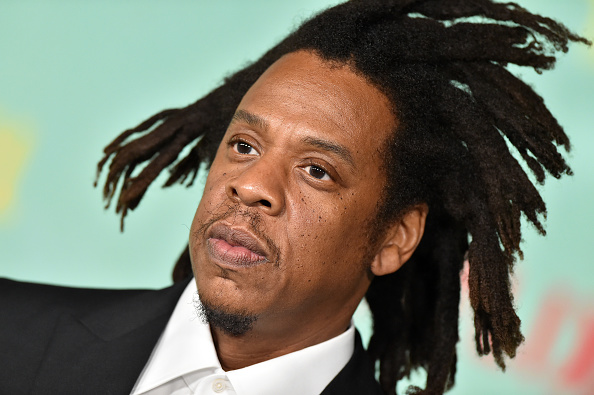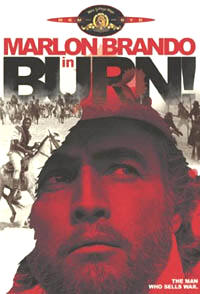Everything You Need To Know About 'The Thing' For Its 40th Anniversary
By Brian Richards | Film | October 29, 2022 | PAJIBA

REV. LOVEJOY: “I remember another gentle visitor from the heavens. He came in peace, and then died, only to come back to life. And his name was…E.T., the extra-terrestrial. (sniffles) I loved that little guy.”- The Simpsons, “The Springfield Files,” a.k.a. the one where Mulder and Scully and even Leonard Nimoy show up
When E.T. the Extra-Terrestrial arrived in theaters in 1982, it won the hearts of critics and audiences worldwide. It made Steven Spielberg into an even bigger success story after his previous hits Jaws, Close Encounters of the Third Kind, and Indiana Jones and the Raiders of the Lost Ark. It made people of all ages, especially children, fall in love with the character of E.T., and filled them with thoughts of what it would be like to meet aliens from outer space just like E.T. It was a movie that not only became a beloved classic, but whose impact would go on to spread like wildfire. (Granted, this didn’t stop the Atari video game adaptation of E.T. the Extra-Terrestrial from being a massive disappointment that not only contributed to the Video Game Crash of 1983, but also resulted in thousands of unsold copies being taken to a landfill, buried underground, and then having that burial site covered with concrete.)
Unfortunately for John Carpenter’s The Thing, which opened in theaters two weeks after E.T. the Extra-Terrestrial on June 25, 1982, that impact practically ruined any chances the film may have had for box-office success. Because after seeing a kind-hearted alien befriend a lonely young boy in the suburbs of California, nobody wanted to see a mysterious alien organism murdering humans and animals in the freezing cold landscape of Antarctica.
At a scientific research station located in Antarctica, the twelve men who are assigned there notice an Alaskan Malamute running for its life while being chased by a helicopter, which is carrying both the pilot and a man armed with a rifle and hand grenades who has every intention of trying to kill the dog for reasons unknown. The helicopter ends up exploding right next to the pilot, and the rifle-toting man is shot to death due to his refusal to lower his weapon while yelling at the other men in Norwegian, which none of them are fluent in. The dog is taken inside to safety, and once it becomes acquainted with its surroundings, it soon reveals that it is not really an ordinary dog. It is an ancient alien lifeform that can perfectly imitate any human or animal that it comes into contact with, and it has every intention of possessing whoever crosses its path and killing anyone who threatens its survival. The twelve men, including helicopter pilot MacReady (Kurt Russell); senior biologist Blair (A. Wilford Brimley); chief mechanic Childs (Keith David); dog handler Clark (Richard Masur), and station commander Garry (the late Donald Moffat) discover who and what they’re dealing with, and are forced to accept that not only is this Thing willing and able to kill every single one of them, it is also capable of changing its appearance to look, act, and sound like each and every one of them. Which forces each of them to ask: Who can be trusted? And will they survive?

John Carpenter was first approached to write and direct his own re-telling of director Howard Hawks’ Christian Nyby’s The Thing from Another World in 1976 before he grabbed Hollywood’s attention with Halloween two years later. But he was reluctant to take the job, as he held that film in very high regard (For further proof, the scary movie that Tommy Doyle and Lindsey Wallace choose to watch while they’re being looked after by their babysitters is none other than The Thing from Another World), and had doubts as to whether his own version of the story would measure up or even surpass it. But once he took another look at Who Goes There?, John W. Campbell’s 1938 novella that inspired The Thing from Another World, and realized that the story’s themes could be just as powerful and terrifying in the present day as they were when Nyby made his film, he decided to go for it. Carpenter later decided to cast Kurt Russell in the lead role of MacReady, as they had worked well together on both Elvis and Escape From New York. And before he became more well-known due to his commercials for Quaker Oats and diabeetus Liberty Medical, and that inexplicable Cajun accent he used in Hard Target, Wilford Brimley was cast in one of his very first roles as Blair, who quickly deduces what the Thing has planned for his colleagues and for the rest of civilization, and none of it is good.

Carpenter’s brilliant directing, Bill Lancaster’s superb screenplay, Drew Struzan’s iconic poster, and an impressive ensemble cast whose performances make you care whether they will live or die, while also wondering which one of them is actually hunter or prey. They all contribute to how incredible and frightening The Thing is, and why it’s a film that is still worth watching and discussing four decades after its theatrical release. But if there’s one person whose work deserves praise, and who is largely responsible for scaring the living sh-t out of most audiences who watch it for the first time, it’s special make-up effects designer Rob Bottin. He was able to make the effects for the Thing itself look convincingly horrifying and gruesome as it unleashed its warpath on MacReady and company. It also helped to maintain the mysterious and unknown nature of the Thing, as we never do see what it really looks like, due to each one of its metamorphoses that causes it to resemble its previous inhabitant. But the damage that it is able to inflict whenever it makes its presence felt, whether it’s absorbing all of the surrounding sled dogs while locked in the research station’s kennel, or turning its own chest into a giant mouth in order to bite someone’s arms off, is truly unforgettable. It’s what convinces both the characters in the film, and the people in the audience, that this Thing is a serious threat that needs to be found and destroyed before it’s too late. (Legendary special-effects creator Stan Winston provided some assistance to Bottin, but he insisted on remaining uncredited so that attention wouldn’t be taken away from Bottin’s own accomplishments. Hence why he is given “Special Thanks” in the film’s closing credits.)

And this article wouldn’t be complete without a shout-out to the late, great composer Ennio Morricone, whose score and usage of synthesizers is not only reminiscent of Carpenter’s own music from Assault on Precinct 13, but is perfect in setting the mood for what’s to come and putting the audience on edge.
As the primary setting, U.S. Outpost 31 is immersed in bitter Antarctic cold while also located thousands of miles away from the rest of civilization, which leaves the research team members to rely only on each other for companionship. Despite that reality, one quickly gets the impression that they’re really not the closest of friends, but they work well together in order to carry out their respective duties and get the job done. Even MacReady mostly wants to be left alone in his shack to play chess on his computer, get drunk, and get some much-needed sleep. The paranoia that suddenly kicks into high gear when the Thing arrives and launches its bloodbath soon results in the men being at each other’s throats, to the point where it’s almost a greater danger to them than the actual Thing itself.
One man ends up dying from a bullet to the head, another comes this close to blowing up everyone else with dynamite when they accuse him of being the Thing and attempt to bum-rush him, and it even reaches the point where the men are tied up and held at gunpoint until they each forcibly take a blood test that proves if they’re for real or if they’ve been infected by the Thing. (The blood test scene occurring in a film that was released in theaters just as the AIDS crisis started getting serious attention from the medical community is naturally hard to ignore.) Much like the classic Twilight Zone episode, “The Monsters Are Due on Maple Street,” the Thing doesn’t really need to do much in order to wear the men down, and make them turn against each other out of fear and exhaustion and distrust. It simply needs to stand back and watch as they do the majority of the work all by themselves.

The Thing was not a box-office success when it opened in theaters. Besides the fact that it was a dark, scary, and violent film that was released in the same month as the heartwarming and family-friendly E.T., it has been said that The Thing not only dealt with poor marketing but also suffered from bad timing all around. Not just because of E.T., but because the film opened when many other sci-fi/fantasy films such as Conan the Barbarian, Blade Runner, Poltergeist, Tron, and The Road Warrior were all playing on the big screen as well that same year, and audiences possibly reached their limit with how much sci-fi and fantasy they were willing to buy tickets for. It also didn’t help that critics were incredibly harsh with their reviews of The Thing, as many of them described it as boring, nihilistic, disgusting, and simply unbelievable. But as the years went on, the general opinion of the film had greatly improved, with more people renting it on home video and realizing that what they had ignored in movie theaters was actually a terrifying and beautifully-crafted work of art. It soon went from being a widely loathed disappointment to a beloved classic now considered one of the greatest and most influential sci-fi films of all time.
This is something that John Carpenter is grateful to hear whenever he’s interviewed and his legendary career is discussed, especially since he has said that The Thing is probably the film he is most proud of. But considering that his career and his confidence both took massive hits as a result of The Thing’s critical and commercial failure, and that he lost several career opportunities because of it (he was originally hired to direct the film adaptation of Stephen King’s novel Firestarter, but Universal Pictures later rescinded their offer), he has a right to be bitter and talk sh-t in his most recent interviews, and to possibly even wonder where all of this adoration and support was when he needed it most back in 1982.
2011 saw the release of The Thing, which was a prequel to Carpenter’s film, and showed the events at the Norwegian research station that led to the Thing being chased to U.S. Outpost 31 by a helicopter and shot at in the first place. It starred Mary Elizabeth Winstead, Joel Edgerton, and Adewale Akinnuoye-Agbaje.
In 2010, Clarkesworld Magazine published the short story The Things, which was written by Peter Watts, and was told from the perspective of the actual Thing during the events of Carpenter’s film.
It also became known back in 2018 that the scientists who work at the Amundsen-Scott South Pole Station have a yearly tradition they partake in to signify the changeover when the summer crew of scientists leave the station, and the winter crew arrives. The winter scientists get together and watch all three versions of The Thing to prepare themselves for the eight months of darkness and isolation they will death with as part of their work, even after the very last flight from their station has departed.
As The Thing arrives at its conclusion, MacReady makes it clear to his fellow survivors that the Thing is willing to kill them all before slipping into hibernation until a rescue crew arrives with the possibility of escape and further assimilation, and how that cannot be allowed to happen, even at the cost of their own lives. John Carpenter has said more than once when interviewed that he considers this to be a rather hopeful and inspirational ending for the film, and that it isn’t nearly as bleak and hopeless as most critics and audiences would think. When you look back at these last couple of years, it’s easy to remember how there are far too many humans who used the COVID-19 pandemic as an excuse to be as cruel, reckless, and selfish as possible, while caring only about their own comfort and satisfaction.
And yet, watching the final scene that shows two men accepting their terrible fate and refusing to put the rest of the world in jeopardy, even as they both wonder if the other has been infected by the Thing? Maybe Carpenter has a point.









